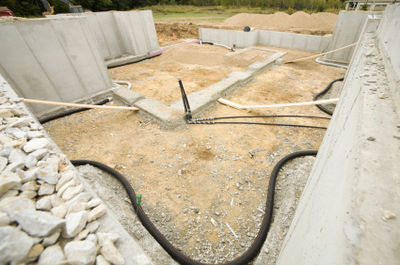
Small, proactive steps could prevent thousands of radon-related deaths.
When I worked at a federal regulatory agency, I used to hate the term “no-brainer” to describe a pending decision. As someone who has studied and written about quantitative decision analysis, I’m skeptical that any decision problem has only one sensible answer; often, such a conclusion instead reflects myopia about possible untoward consequences, uncertainty in probability, or the array of other legitimate public preferences and values. But when the Robert Wood Johnson Foundation (RWJF) asked its grantees recently to suggest policy ideas that could yield specific and substantial reductions in an important public health problem, I immediately thought about an issue that seems to me to have a “no-brainer” of a solution that is—perennially—just waiting to be embraced.
We have known for over 30 years that widespread exposure to the ionizing radiation given off by indoor radon gas is likely to be a major cause of lung cancer in the U.S., and we know how to reduce exposures cost-effectively. But, of the eight million homes in the U.S. where radon levels are likely to be especially high, only about one-quarter have ever been tested, even though the test now costs less than $40. And fewer than ten percent of those eight million homes have had their levels reduced. At least in the short term, the prospects for reducing levels further look rather bleak, as the President’s proposed 2013 budget for the Environmental Protection Agency (EPA) would eliminate funding for radon awareness.
I have sketched out an idea to solve the national radon problem, in perpetuity, for a fairly modest sum of money. Given how straightforward it would be to solve this problem, perhaps readers will agree that our current policy is in fact aptly described using the term “no-brainer” – but as a pejorative.
Radon is a naturally occurring byproduct of the radioactive decay of elements such as uranium, radium, and thorium, which are found in ores and rocks throughout the world, particularly granite, shale, and limestone. Although soils all over the country contain some levels of radon, the highest concentrations are along the Appalachian mountain range, in the Upper Midwest and Great Plains, and the northern Rockies. Radon is heavier than air, so worrisome concentrations are almost always confined to the lowest levels of homes and apartment buildings.
How risky is prolonged exposure to radon? The estimates come from several large studies of excess lung cancer in U.S. and German uranium miners exposed to somewhat higher levels than those found in homes in high-radon areas. From these studies, EPA developed an “action level” of home radon exposure of 4 pCi/L (trillionths of a curie of radiation from radon per liter of air). The EPA risk assessment concludes that if you live in a home whose living space exposes you to 4 pCi/L, your additional cancer risk over a lifetime is roughly seven chances per thousand if you never smoked cigarettes, or an additional six chances per hundred if you are or were a smoker. Given that Congress has generally instructed EPA to consider further pollution controls when the excess lifetime cancer risk exceeds one chance per million, these risks are quite large, although they may be substantially lower in situations where high concentrations are only found in rooms not used as living space. But, considering all the exposures nationwide, EPA estimates that about 21,000 lung cancers per year—about one-sixth of all lung cancers—in the U.S. are caused by radon exposure, and, of course, lung cancer is notoriously difficult to treat successfully.
The technology to prevent many of these estimated 21,000 lung cancers is straightforward and well understood. In our house in central New Jersey, radon levels in the basement were reduced from about 8 pCi/L to less than 1 pCi/L, after the previous owners installed a system that pipes air from under the basement floor and exhausts it through a port high on the outside wall. Such systems cost about $1,500 to install and consume about $100 of electricity per year. Overall, for a present value of about $38 billion—a large sum, but just a few percent of the size of the recent economic stimulus package—we could use in-home tests to find the eight million dwellings with levels above 4 pCi/L, and greatly reduce radon levels in every one of them for the next 100 years.
Such a program could be greatly accelerated if every state had a law requiring radon testing and disclosure of results as a condition of every home sale, or at least for those in high-radon counties. Granted, many states have laws that require disclosure if such testing has been voluntarily performed, but I know of no state that requires testing followed by disclosure.
Even if the federal government wanted to encourage people to mitigate radon by “nudging” them rather than providing the public health benefits as part of a fiscal stimulus, it still seems inexplicable to declare, as the administration’s 2013 budget does, that an $8 million EPA program to educate the public about radon is a “mature program” that can be zeroed out. In my opinion, this is the wrong time to declare victory on a problem in which we have barely made a dent.
Many psychometric surveys, corroborated by the emerging research into neuroscience, suggest that people’s concerns are motivated more by the emotional “affect” that a risk brings with it than by the magnitude or severity of the risk. If these results hold true, radon control has several strikes against it, because there is no “polluter” to arouse outrage, other than the forces that created our planet and its naturally-occurring radioactive elements. Nevertheless, we could save lives, and expand the industries providing radon testing and mitigation, if we just let cost-benefit thinking lead us in a sensible direction with respect to radon.




